MLS's Parallel Paths in Columbus, Austin Both Lead to Heart of 2021 Season's Narrative
It was early December 2017. Major League Soccer’s two dominant clubs were about to play for the championship for the second straight season. One was looking for a repeat. The other was hoping to complete an extraordinary treble. And yet all most people wanted to talk about was a smaller city that was about to lose its team and another that didn’t have one. Seattle and Toronto were overshadowed as league executives and media gathered in Ontario and as commissioner Don Garber conducted his MLS Cup press conference. Despite the setting, Columbus and Austin were the story.
There was a lot at stake—more than just a single championship. And that was reflected in question after question. So much of the league’s marketing and messaging had been about fostering meaningful connections between clubs and communities. But in late 2017, as Columbus Crew owner Anthony Precourt acknowledged his interest in moving the team to Austin—and as the league offered its support—that messaging was at risk. It felt like a facade that might crumble and fall away, revealing an enterprise governed only by capitalist expediency.
Crew fans had never had the benefit of a local owner. Now their club was in peril. For them, the crisis was existential. For others, it was a narrative so compelling that just about everything else paled. For a league whose logo features stars that represent “club,” “country” and “community,” Precourt’s overtures to Austin felt like a final exam.
In the midst of it, with the Save The Crew movement gathering momentum and lawsuits on the way, and as Precourt seemed to have given up on Columbus while the city insisted on exclusive negotiations, Garber allowed for the possibility of a miracle. There would be “parallel paths”, he said in Toronto. Precourt would begin laying the foundation for his move to Austin while the league would leave the door ajar for Columbus. And there was a point at which it looked like neither city was viable, as no solution emerged in Ohio and Precourt’s early stadium proposals met with resistance in Texas. It could’ve been a disaster.
Few could’ve imagine then that three years later, those parallel paths would lead to this: two MLS markets on the rise, two new stadiums about to open, a worthy MLS champion in the Crew and an expansion team that’s captured a city’s imagination in Austin FC. Whether MLS got lucky and dodged a bullet or had a hand in engineering that miracle, the conclusion to the crisis is a happy irony. As the league sets to kick off its 26th season on Friday night, Columbus and Austin are once again the lead story. These mid-size soccer cities, devoid of the biggest spenders and biggest names, are driving a significant part of the narrative.
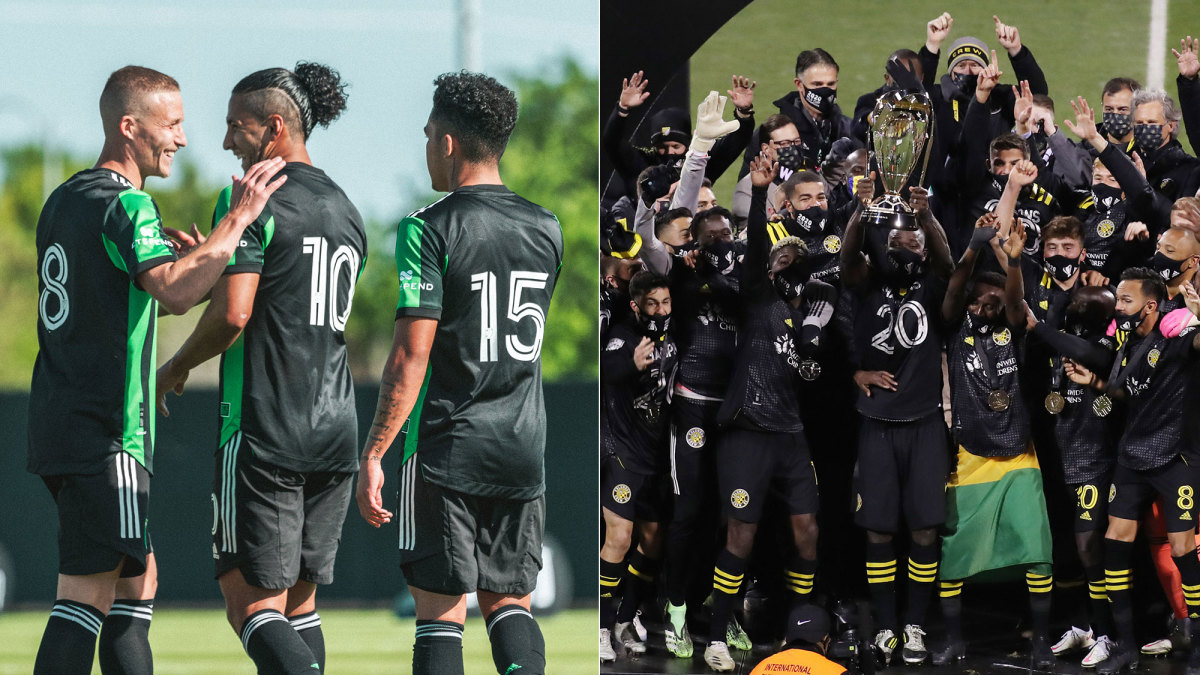
"I think a lot about how out of crisis comes opportunity, and out of [a] challenge that really tests leadership and their ability to sort of empower everybody around them to have optimism and confidence,” Garber said this week. “I remember during all of the challenges that we had in Columbus and how complicated that was, believing that we would get through it and we would get out on the other end in a way that would be positive for every stakeholder. Positive for the fans, most importantly, in Columbus and ultimately in Austin, positive for the two cities, positive for our league. And it wasn't easy. You know we took a lot of bullets, if you will, shots from a lot of people. There was a lot of tension during that process.”
From high above, Columbus and Austin are similar cities. They’re state capitals, white-collar towns at the heart of metro areas numbering around 2.2 million people each. There’s not a lot of pro sports tradition in either place. That’s thanks in part to their size and the cities nearby, but it’s also because of the massive state universities that dominate their cultural and athletic landscapes. Those factors were wielded as weapons against Columbus, or excuses by it, for years.
But when Precourt chose Austin, it became clear that soccer can blossom in all sorts of soils if the owner and market are a good fit. It takes commitment from both sides, as well as people who are comfortable navigating the political, corporate and social channels of a city. The chemistry has to be right. Precourt had the will, and then the partners, to make it work in Austin, an evolving city eager to join the big leagues. And Columbus, motivated by the potential loss of the league’s first club, found the perfect investors in Dee and Jimmy Haslam, the owners of the Cleveland Browns.
Where there were questions and confusion, there’s going to be permanence. Austin will open 20,500-seat, $260 million Q2 Stadium in early June. Columbus will follow with its 20,000-seat, $314 million arena one month later. In addition, both teams are opening new training facilities. While often reserved for the big-market clubs, big rivalries or big stars, two of the four English-language national TV games during the league’s opening weekend will feature Columbus and Austin.
The Crew not only are the reigning champs, they’re favored by many to repeat. The Haslams’ arrival helped entice two former MLS Cup winners, president and GM Tim Bezbatchenko and head coach Caleb Porter, to the club. They’ve kept last year’s squad together while adding considerable veteran depth in striker Bradley-Wright Phillips, midfielders Kevin Molino, Perry Kitchen and Marlon Hairston, and goalkeeper Evan Bush. Columbus blew the doors off Seattle in December’s MLS Cup final and appears to have improved—so much so that the Crew may be in position to end MLS’s excruciating wait for a Concacaf Champions League title. This team almost didn’t exist in 2019. Now it's must-see TV.
Bradley Wright-Phillips finishes off Columbus’s CCL last-16 triumph, ensuring five MLS teams reach the quarterfinals:@ColumbusCrewSC ✅ @TorontoFC ✅ @ATLUTD ✅ @PhilaUnion ✅ @TimbersFC ✅
— SI Soccer (@si_soccer) April 16, 2021
(via @FOXSoccer)pic.twitter.com/pGPgl4Ecpe
Austin, meanwhile, announced its on-field intentions by prying sporting director Claudio Reyna away from New York City FC. Head coach Josh Wolff is a protégé of U.S. national team manager Gregg Berhalter (yet another link between Austin and the Crew), and they’ve inked two intriguing South American Designated Players in Paraguayan winger Cecilio Domínguez and Argentine playmaker Tomás Pochettino. Throw in MLS fans’ bottomless fascination with expansion teams, Austin’s distinctive green-and-black uniforms and a combination of organic buzz and creative marketing, and you’ve got a second mid-size city capturing more than its fair share of the spotlight.
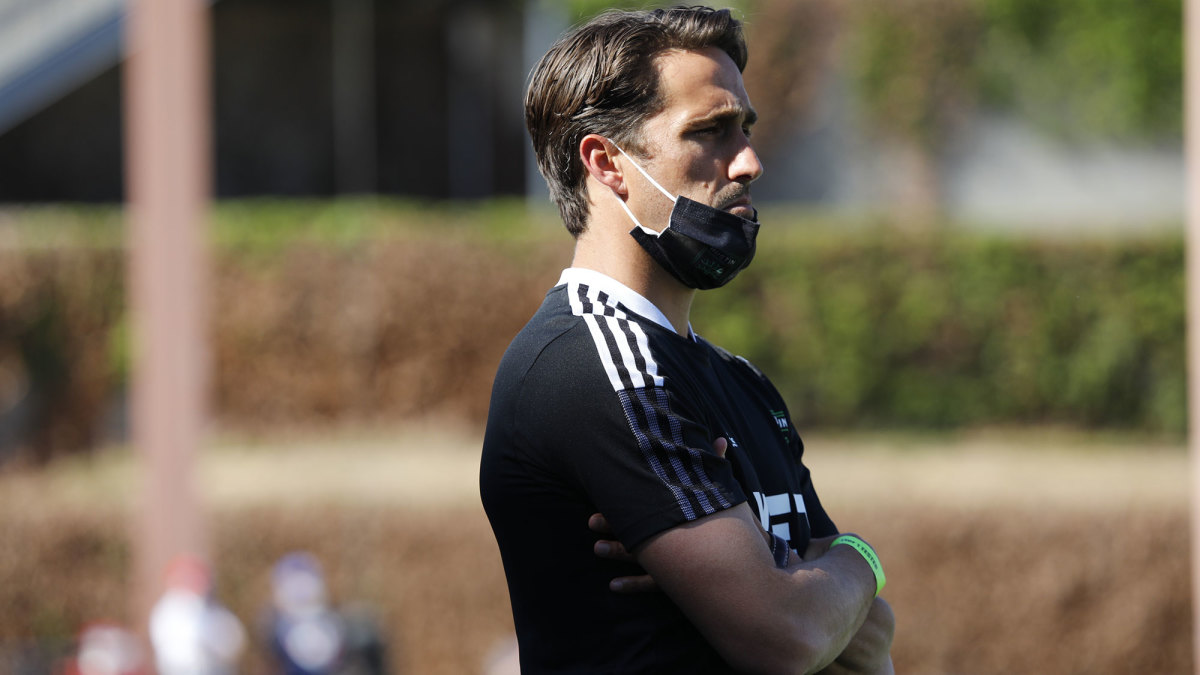
“Almost everyone who was involved showed leadership,” said Garber, citing officials in Columbus, Precourt’s “courage” in navigating the transition and then the Haslams’ triumphs on and off the field. “While I don't know that everybody will ever look at the commissioner like that [in Columbus] and feel great about it, that's O.K. But I know that everybody went through this and feels really, really good about the outcome.”
There won’t be many interconference games contested during a season played under a caution flag, but the MLS schedule maker was too smart to ignore the Austin-Columbus narrative. They’ll meet at Q2 on June 27. Meanwhile, in addition to Carlos Vela’s pursuit of a title with Los Angeles FC, Javier ‘Chicharito’ Hernández’s potential revival with the LA Galaxy and the attempts by Seattle and Toronto to wring yet another run out of their cores, modest Columbus and Austin will be two of the most closely-followed stories this year.
Bezbatchenko was winning trophies in Toronto when the Crew’s fortuned turned south, then he jumped at the chance to come home when the Haslams stepped in to save the club (and MLS’s brand). He’s from Columbus. So even though he missed the drama, he’s no stranger to the passion that underpinned Save The Crew.
“Columbus must have a team, because it would be inconsistent with the direction of where this city is going to not have,” he told Sports Illustrated. “Everybody loves their city—don’t get me wrong. But the people in Columbus, it’s strange almost how much they love their city. Having been in New York and Toronto, you’re like O.K., it’s natural in these large, global markets to express that outward passion for your city. But the love of this city, Columbus, is world class if you actually talk to the people who live here.”
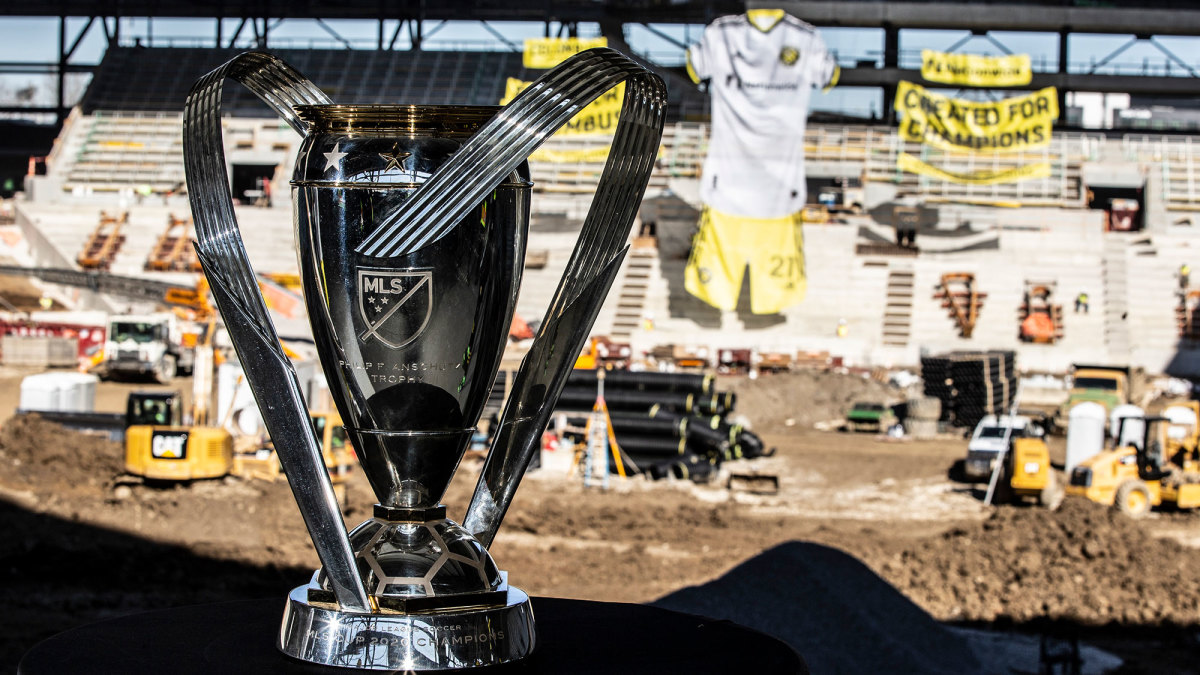
Save The Crew galvanized local politicians, officials and corporate leaders and, ultimately, the Haslams. For years, under the ownership of both the late Lamar Hunt and his family and then Precourt, Columbus struggled with metrics apart from wins and losses. Toward the end of the 2010s, the Crew ranked near the bottom of the league in sponsorship, ticket and commercial revenue and season ticket commitments. MLS appeared to conclude by the end of 2017 that Columbus was hopeless. But it was always about the formula. While the Hunts and Precourts couldn’t find it, the Haslams had the connections and financial wherewithal to ignite the spark required.
“I do think there’s a difference when you’re in the community. You’re there. You live there. You’re involved,” Dee Haslam told Sports Illustrated in December. “We don’t live in Columbus but we’re two hours away, and we’re there and we’re part of Ohio. And [minority investor Dr. Pete Edwards] is right there. So we feel there. We’re involved in what goes on in the community. … Everything’s based on relationships. I think that’s what’s been so helpful.”
The new stadium doesn’t yet have a corporate sponsor (the club is in talks), but the OhioHealth Performance Center does, and Bezbatchenko said the Crew now has sponsorship commitments that lift it into the league’s top quartile. Suites in the new stadium are sold out and premium seating is nearly there, he added.
“We’re in a very good place,” he said.
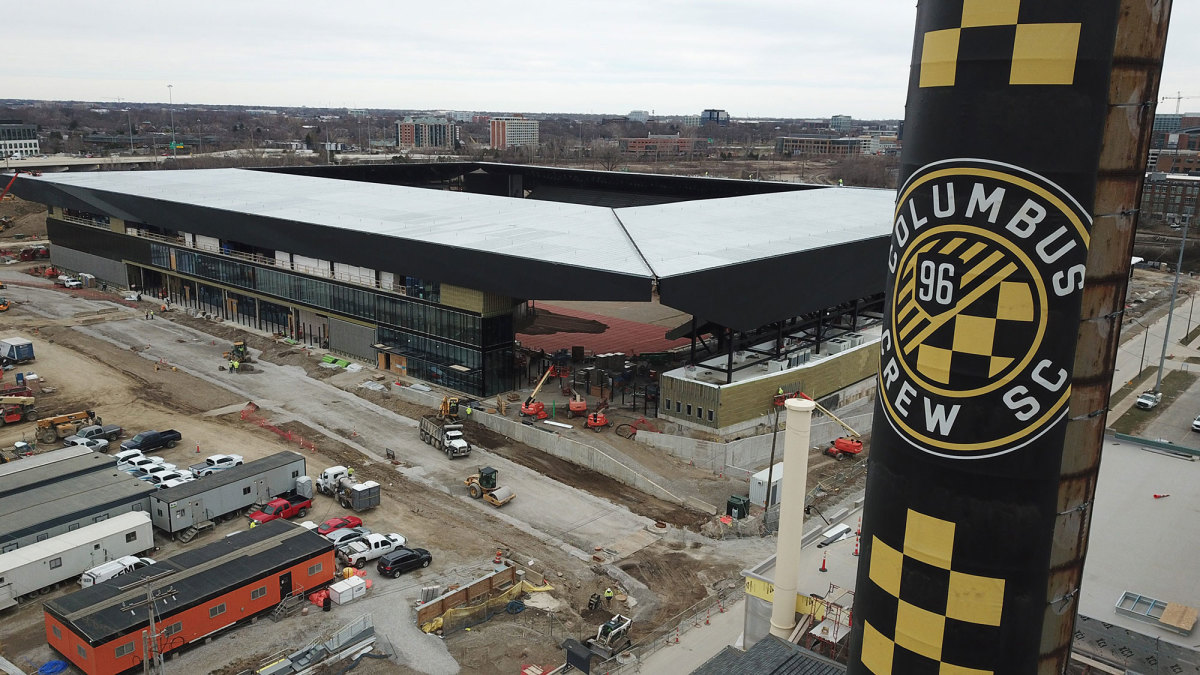
From that good place, the Crew are poised to reach a level that was unimaginable three years ago. They’re not content to simply exist. Columbus now has a long-awaited second MLS Cup on the shelf, and it's gunning for more. The roster is stacked and there’s still room to add. A state-of-the-art infrastructure is almost complete. The Crew are now in position to make a happy kind of history.
“The idea that you could take a team that had almost moved away and then turn them into a championship team, that story line did not exist. And I’m not sure it will ever exist again. So once the club became relevant through Save The Crew—because I do think we were fighting for relevancy in Columbus before the movement—and our fans stood up and said, ‘Dammit you’re not taking our team,’ it sort of instantaneously became a global story,” Bezbatchenko said.
“That means we’re going to get more support, not just in attendance, but from sponsors and from the community,” he concluded. “And so I think once you have the support form all those three constituents, it’s actually much easier to win. The ingredients were there.”
If Bezbatchenko is right, then Austin is also in good shape. The intertwined oak trees in the club badge symbolize the same ideal that seemed under assault three years ago—the bond between a club and its city. In this case, even though the verde-and-black have yet to take the field, the ties seem historically strong. Austin FC sold out its allotment of 15,500 season tickets in a single day, setting a league record, and there’s a wait list that’s now reached 14,500. The $45 million St. David’s Performance Center is already open. Precourt told the Sports Business Journal last year that the St. David’s HealthCare sponsorship alone is worth more than the combined stadium, suite, practice facility and jersey front deals in Columbus. That clearly wasn’t the right market for him. Austin appears to be.
But it’s not just Precourt who’s found his way. A big part of the club’s early success is the involvement of local co-owners Eddie Margain and the investor he then brought aboard, Oscar-winning actor and unofficial Austin spokesman, mascot and archetype, Matthew McConaughey. Precourt’s partners do more than help him navigate a new city, they give the club the top-down connection to home that didn’t exist under his ownership in Columbus. It’s worked out perfectly. Austin fans don’t have to be saddled with the taint of cheering for a team wrested from another city. And Precourt, who faced relentless criticism, can defer to McConaughey as the face of the franchise.
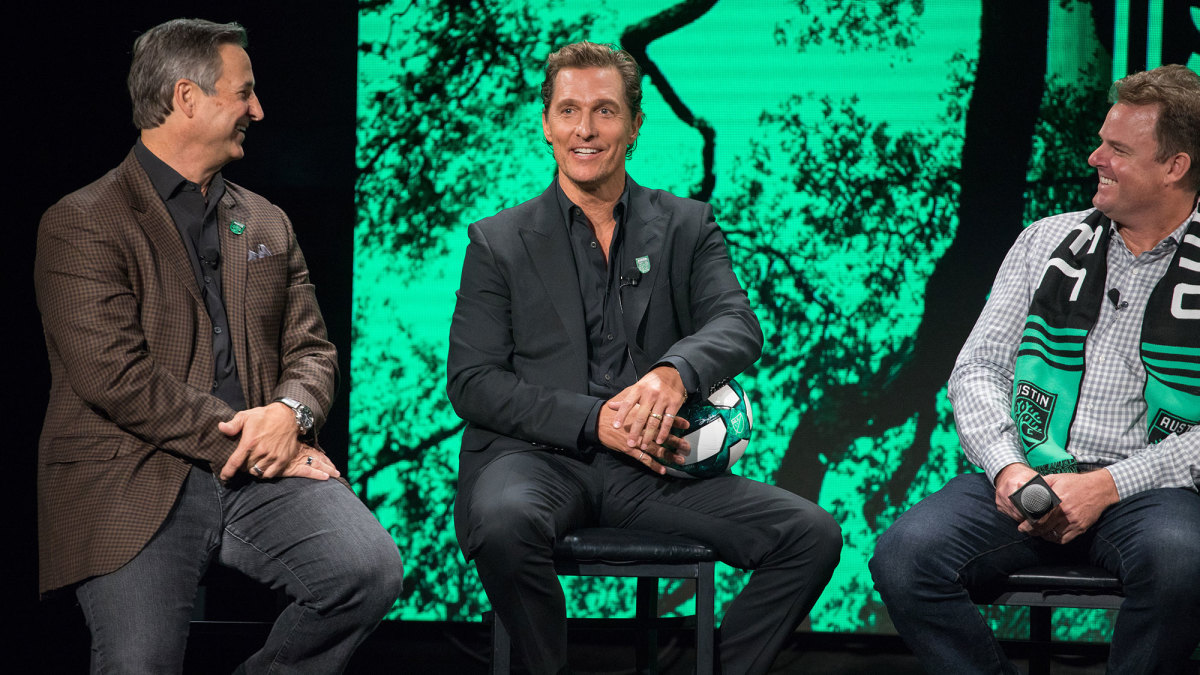
And as Austin FC’s “Minister of Culture,” McConaughey seems happy to be just that. He explained this week why MLS had been eyeing Austin for a decade, and why Precourt was so beguiled by the opportunity. It’s a city, McConaughey argued, that was ready and ripe for the game—“a soccer town already before Austin FC came,” he said. If the Austin-Columbus saga evolved differently—if Precourt didn’t negotiate the Austin option during his 2013 purchase of the club, or if Columbus offered up some kind of stadium deal before Precourt revealed his intentions—then MLS might never have come to central Texas, and it would’ve missed out on a market where it’s likely going to thrive.
“Austin was already a soccer city,” McConaughey said this week, citing World Cup TV ratings (it ranked fourth among U.S. markets during the 2018 World Cup and first during the 2019 Women’s World Cup) and youth soccer’s local prevalence.
“You’ve got 150 people moving here a day. With that many people, we’re one of the fastest growing cities in the nation. It used to be everyone that was here, most everyone, went to the University of Texas—that university. Most people that are here now did not go to the University of Texas. They’re coming here looking for a team. They’re from different parts of the world. We’re not longer just a music town, a government town, a university town. We’re a banker town. We’re a lawyer town. We’re a tech down. We’re a very multicultural place, and soccer is that game that invites all cultures, all diversities, to the stadium—to the pitch—in a common language.”
MLS will celebrate Austin’s debut this weekend, and it’ll root for the Crew in the upcoming CCL quarterfinals against four-time regional champ Monterrey. It’ll celebrate the opening of Q2 Stadium in June and then New Crew Stadium in July. As it does, executives and owners benefitting from the rise of both markets should appreciate how fortunate they are that events unfolded as they did. There’s a storybook solution to what seemed like an intractable problem.
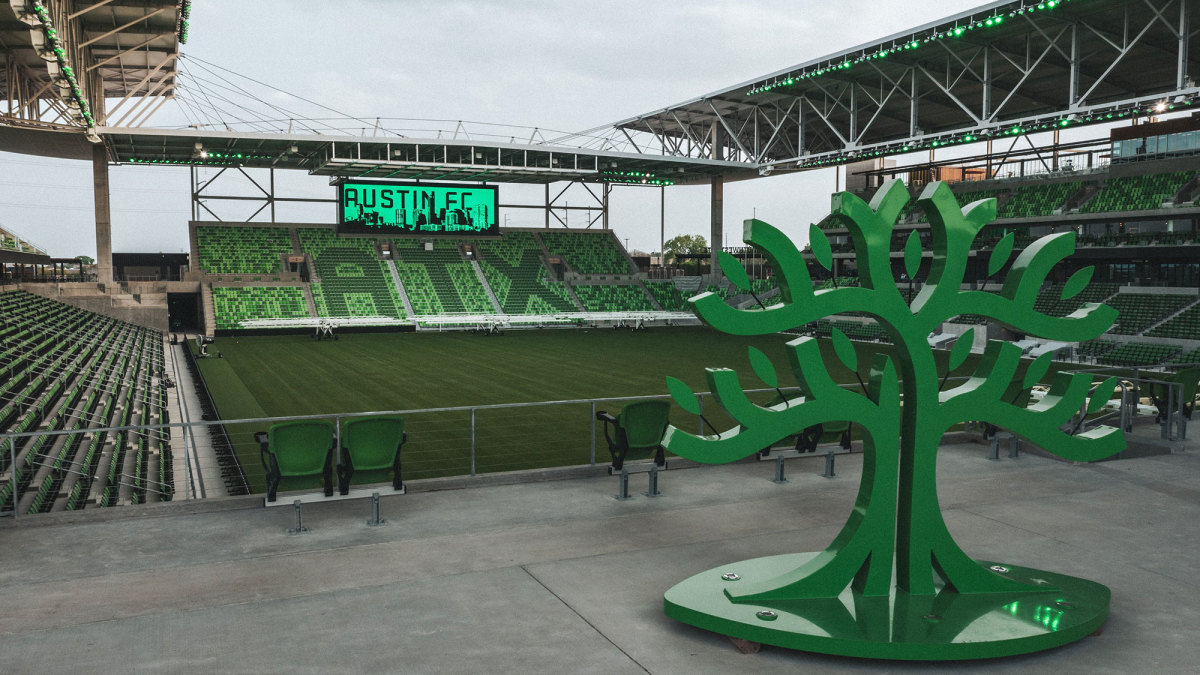
Austin and Columbus likely won’t be rivals. The Crew will be just another team in the other conference to Austin fans, whose club was born and bred in their city. And while there’s a segment of Crew supporters who still feel betrayed by Precourt and the league, they’ve got a new trophy on the shelf and a new stadium on the way, and those hard feelings likely will soften over time.
For now, however, at the dawn of the 2021 season, Columbus and Austin are connected by one of the more significant and unlikely accounts of the relationship between sports teams and their fans, and of the relationship between owners and cities. The tale of a market in search of the right owner, and of an owner in search of the right market, has ended with two teams and two cities that will be the talk of the league. MLS got lucky. And now it can exhale and enjoy the season.
“[It was] the most complicated thing that I've ever had to chart through, but thanks to a lot of people who worked really hard, we're in a good spot,” Garber said. “And I feel very, very happy about that.”
More MLS Coverage:
